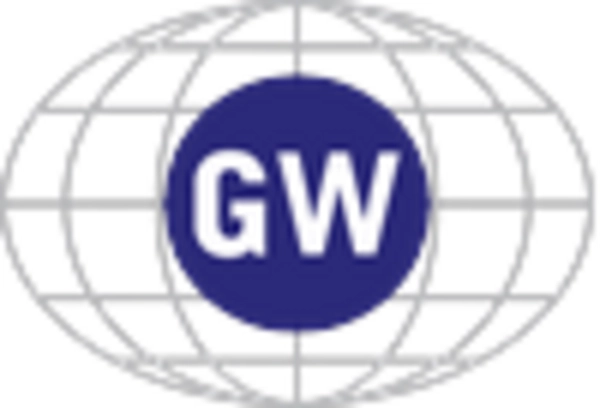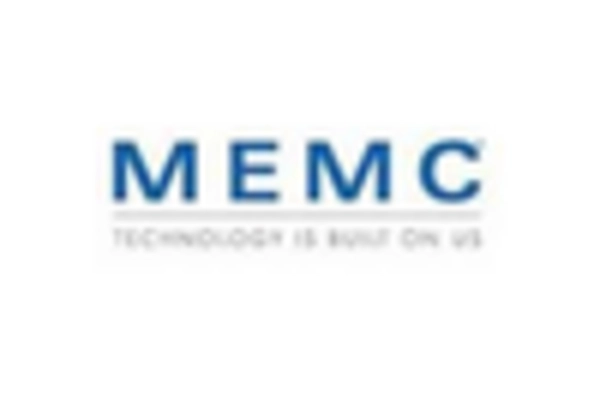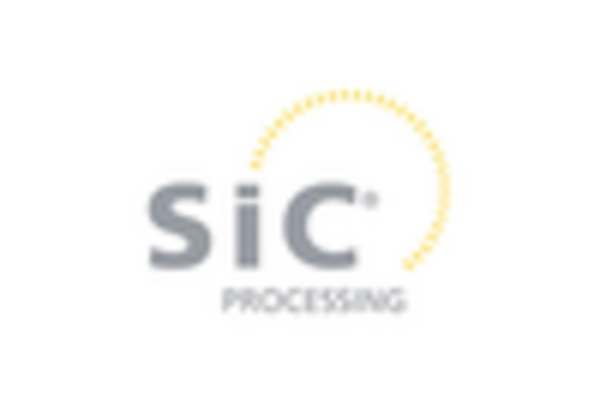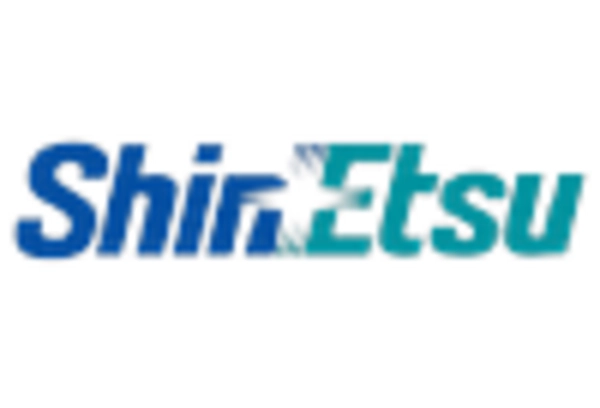Emerging Markets and Economic Growth
The Float Zone Silicon Market is poised to benefit from emerging markets and their economic growth. As developing nations continue to industrialize, the demand for electronic devices and renewable energy solutions is on the rise. Float zone silicon, with its superior properties, is well-positioned to meet the needs of these expanding markets. In 2025, it is projected that several emerging economies will experience significant growth in their technology sectors, leading to increased consumption of high-quality silicon. This trend indicates that the Float Zone Silicon Market may see heightened demand as manufacturers in these regions seek reliable materials for their production processes. Consequently, the Float Zone Silicon Market could play a pivotal role in supporting the technological advancements of emerging markets.
Increasing Applications in Photovoltaic Cells
The Float Zone Silicon Market is witnessing a notable increase in applications within the photovoltaic sector. As the world shifts towards renewable energy sources, the demand for high-efficiency solar cells is escalating. Float zone silicon, known for its superior electrical properties, is increasingly utilized in the production of monocrystalline solar panels. In 2025, the solar energy market is expected to grow significantly, with projections indicating a capacity of over 1,200 GW installed globally. This growth is likely to drive the demand for float zone silicon, as manufacturers seek materials that enhance the efficiency and longevity of solar cells. Consequently, the Float Zone Silicon Market stands to gain from this trend, as it aligns with the broader movement towards sustainable energy solutions.
Rising Demand in Electronics and Consumer Goods
The Float Zone Silicon Market is significantly influenced by the rising demand for electronics and consumer goods. With the proliferation of smart devices, including smartphones, tablets, and wearables, the need for high-quality silicon is paramount. Float zone silicon, with its exceptional purity and performance characteristics, is increasingly favored in the production of integrated circuits and other electronic components. In 2025, the consumer electronics market is anticipated to exceed 1 trillion USD, further propelling the demand for float zone silicon. This trend suggests that manufacturers are likely to prioritize high-purity silicon to meet the stringent performance requirements of modern electronics. Thus, the Float Zone Silicon Market is poised for growth as it caters to the evolving needs of the electronics sector.
Technological Innovations in Semiconductor Manufacturing
The Float Zone Silicon Market is experiencing a surge in technological innovations that enhance the efficiency and quality of semiconductor manufacturing processes. Advanced techniques, such as improved crystal growth methods and enhanced purification processes, are being developed to produce higher purity silicon. This is crucial as the demand for high-performance electronic devices continues to rise. In 2025, the market for semiconductors is projected to reach approximately 600 billion USD, indicating a robust growth trajectory. These innovations not only improve yield rates but also reduce production costs, making float zone silicon a more attractive option for manufacturers. As a result, the Float Zone Silicon Market is likely to benefit from these advancements, positioning itself as a key player in the semiconductor landscape.
Government Initiatives Supporting Semiconductor Production
The Float Zone Silicon Market is benefiting from various government initiatives aimed at bolstering semiconductor production. Many countries are recognizing the strategic importance of semiconductor manufacturing for economic stability and technological advancement. As a result, governments are implementing policies that encourage investment in semiconductor facilities and research. For instance, funding programs and tax incentives are being introduced to support the development of advanced manufacturing technologies. This trend is likely to enhance the competitiveness of the Float Zone Silicon Market, as increased investment leads to improved production capabilities and innovation. In 2025, the semiconductor industry is expected to receive substantial government backing, which could further stimulate demand for float zone silicon as a critical material in semiconductor fabrication.
















Leave a Comment